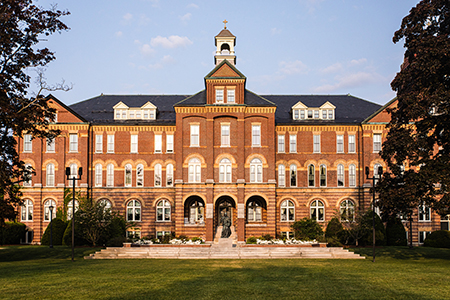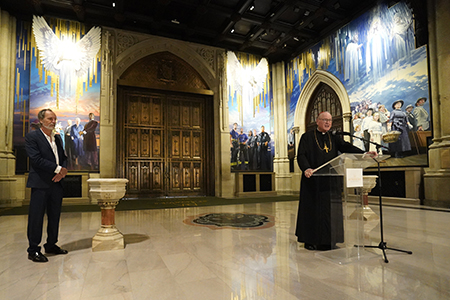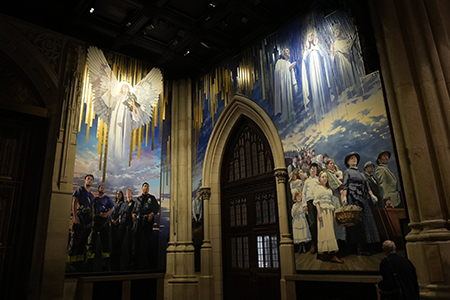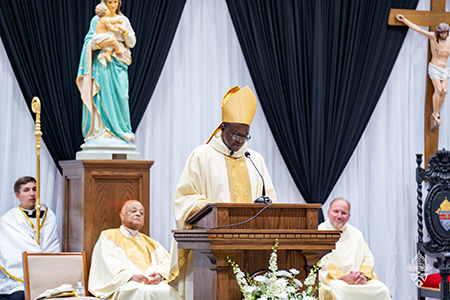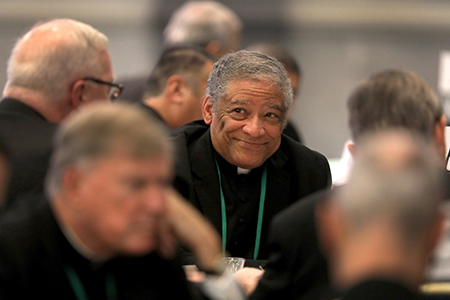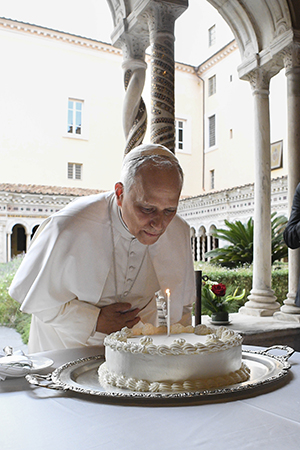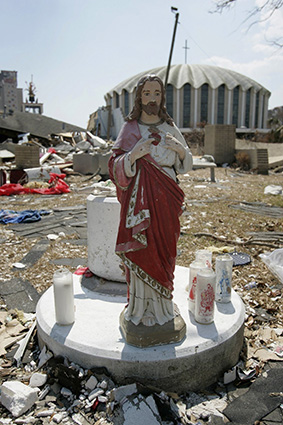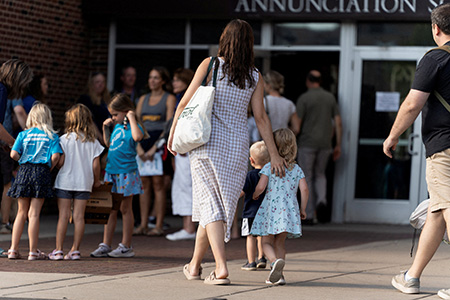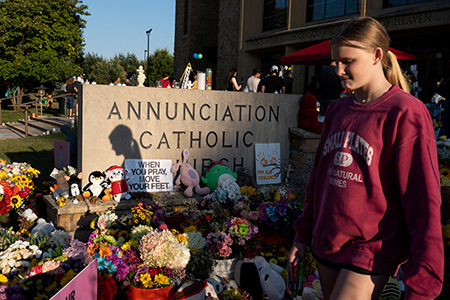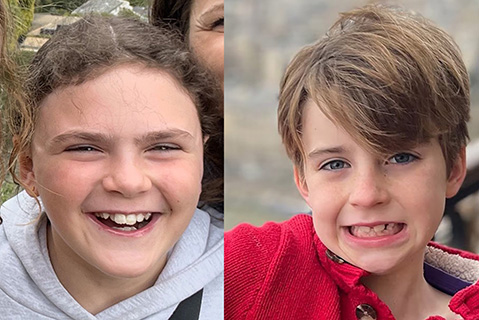NATION
WASHINGTON (OSV News) – Pope Leo XIV has appointed Bishop James F. Checchio of Metuchen, New Jersey, as the coadjutor archbishop of New Orleans. The appointment was publicized Sept. 24 In Washington by Cardinal Christophe Piere, apostolic nuncio to the United States. As coadjutor, Archbishop Checchio will assist Archbishop Gregory M. Aymond and automatically succeed him upon retirement. Archbishop Checchio called the New Orleans Archdiocese a “faith-filled” community and thanked both Pope Leo and local church leaders for their warm welcome. As coadjutor, he is coming into an archdiocese faced with having to resolve hundreds of sexual abuse claims. A Camden, New Jersey, native, Archbishop Checchio brings to his new assignment decades of pastoral and administrative experience – including 10 years as rector of the Pontifical North American College in Rome. Ordained in 1992, he has led the Diocese of Metuchen since 2016, prioritizing parish visits, child protection and accountability. Notably, the diocese said in a statement, he implemented a bishop abuse reporting system before it was required by church law. Archbishop Checchio has served on national boards, including Seton Hall and the National Catholic Bioethics Center – and once ministered as chaplain to the NFL’s Philadelphia Eagles.
WASHINGTON (OSV News) – The 2026 National March for Life theme is “Life is a Gift,” The March for Life Education and Defense Fund announced Sept. 30. Jennie Bradley Lichter, who became president of the March for Life earlier this year, noted the group chooses a theme each year for the annual pro-life march in Washington as “an opportunity to focus our attention on a key message or a timely element of the prolife mission.” “We’re now at a critical moment in our country where the March for Life and what we stand for is more important than ever,” Lichter told reporters at a launch event, adding, “This year, with this theme, we really want to speak to the heart.” The 53rd annual National March for Life is scheduled for Friday, Jan. 23, 2026. A pre-rally concert will feature the Christian band Sanctus Real, Lichter said, and the Friends of Club 21 Choir, comprised of individuals with Down syndrome, will lead the national anthem at the event. Georgetown University Right to Life will carry the banner at the start of the March. Lichter said the group is also launching a “Marchers’ Stories Project” where they will seek video submissions from participants to document the group’s history.
VATICAN
VATICAN CITY (CNS) – Loving someone who is sick requires “concrete gestures of closeness,” just like that shown in the Gospel story of the Samaritan who helps the person beaten by thieves, said a Vatican office. The Dicastery for Promoting Integral Human Development announced Sept. 26 that Pope Leo XIV had chosen the theme for the church’s next celebration of the World Day of the Sick: “The compassion of the Samaritan: Loving by bearing the pain of the other.” The world day is celebrated annually on the feast of Our Lady of Lourdes Feb. 11. A papal message for the celebration usually is published in early January.
VATICAN CITY (CNS) – Pope Leo XIV announced he will proclaim St. John Henry Newman a doctor of the church Nov. 1 during the Jubilee of the World of Education. Speaking after Mass Sept. 28 for the Jubilee of Catechists, the pope said St. Newman “contributed decisively to the renewal of theology and to the understanding of the development of Christian doctrine.” The Dicastery for the Causes of Saints had announced July 31 that Pope Leo “confirmed the affirmative opinion” of the cardinals and bishops who are members of the dicastery “regarding the title of Doctor of the Universal Church which will soon be conferred on Saint John Henry Newman, Cardinal of the Holy Roman Church, Founder of the Oratory of Saint Philip Neri in England.” St. Newman was born in London Feb. 21, 1801, was ordained an Anglican priest, became Catholic in 1845, was made a cardinal in 1879 by Pope Leo XIII and died in Edgbaston, near Birmingham, England, in 1890.
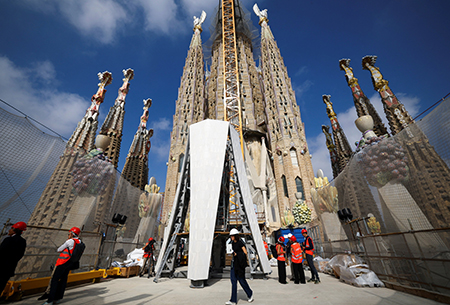
WORLD
BARCELONA, Spain (OSV News) – The iconic Sagrada Familia in Barcelona is nearing a historic milestone: the completion of the Tower of Jesus Christ, which will make it the tallest Catholic church in the world. Designed by visionary architect and Servant of God Antoni Gaudí, the tower will stand over 564 feet tall – surpassing both the Basilica of Our Lady of Peace in Ivory Coast and even Germany’s Ulmer Münster. Head architect Jordi Faulí announced that the central spire is finished, and crews are now preparing to install a massive seven-piece cross atop it. “The cross is made up of seven large pieces that are assembled here and will then be lifted with the crane,” Faulí said. The cross is expected to be in place by early 2026, aligning with the 100th anniversary of Gaudí’s death. Construction on the basilica began in 1882 and has weathered wars, pandemics and funding delays. While the main structure is on track for completion in 2026, artistic elements like statues and chapels will continue into the 2030s – bringing Gaudí’s masterpiece one step closer to completion.

